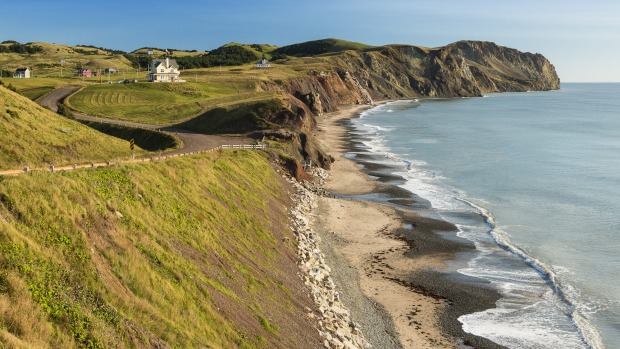
As any school kid will tell you, the subject of "Canadian history" doesn't evoke much – except perhaps coma. While American history played out to the thrilling sound of six-shooters, Canada's annals were enlivened only by the scrit-scratch of treaties being signed between Britain and France. (Head on desk, faint groan: 'Kill me now…')
This is possibly why One Ocean advertised its inaugural 10-day expedition cruise as a "Wildlife Safari". Not that I blamed them. Even the cruise destination – "Canada's Maritime Provinces" – sounded about as much fun as taking inventory in a canning factory.
But what did I know?
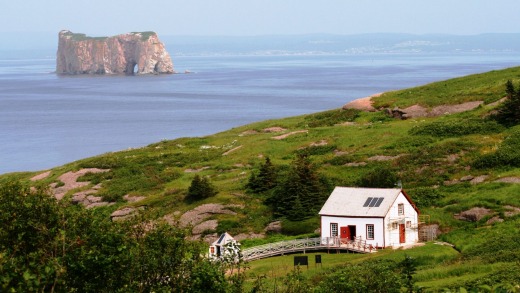
Well, in the wildlife department, I didn't know that rabbits gnaw on moose antlers (presumably after the moose has shed the horn, unless bunnies hang on like Christmas decorations). I didn't know that a humpback whale will glide metres from a kayak eyeing you the whole time. I didn't know that foxes are welcome on some Canadian islands for handy refuse processing.
But neither did I have the faintest inkling that one of history's most fascinating chapters played out here. Nor that I would be going somewhere few had gone before…
"You are dining "working class" today," said the serving girl in the bonnet. "Which is why you only have a spoon. This is for use in all three courses. If you need to stir your coffee or tea, use the handle."
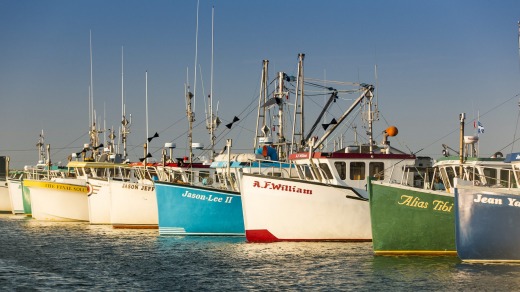
I was in Grandchamps House, a low-ceilinged, windowless eating place of rough, whitewashed timber. Those diners who were designated "upper class" got turkey pie (and cutlery), while we scurvy knaves had to be content with pewter plates piled with common codfish, carrot and turnip.
Codfish, however, was the key. (And, by the by, delicious.)
For some 500 years, Northwest Atlantic cod was a prime commodity, as integral to economies as oil is today. Salted and dried, it could be shipped back to Europe or traded for New World prizes like sugar, rum and tobacco. It turned the fortified settlement of Louisbourg – on the eastern shores of Cape Breton in Nova Scotia – into a commercial powerhouse.
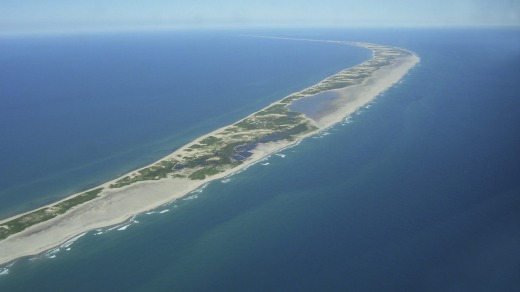
The French built the fortress in 1713 to protect their North American interests. The British, who had the same interests, took it off them (twice) and used extraordinary amounts of gunpowder to destroy it in 1758. Two hundred years later the Canadian government rebuilt it using extraordinary amounts of taxpayer's money.
Today, the vast stone complex is enlivened by actors in period dress, including plain-speaking serving girls, a small battalion of soldiers who fire real cannons, and – unusually – parties of local schoolchildren and old people who populate the stores and town square.
While I was there, thick fog was also playing a role, blurring time and place. But fog in these parts is clearly something greater than a climatic event. It rolls in at will, even through summer, causing still waters to moan evocatively – 'ships beware'.
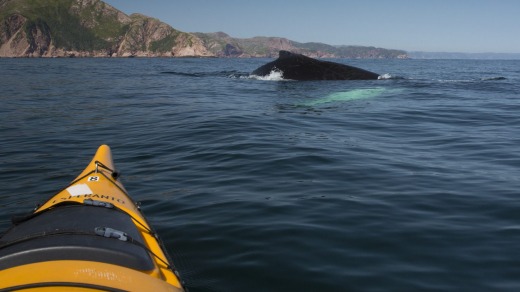
Back when cod stocks were so thick 'you could walk on them', fog would have cloaked a hundred trading vessels in Louisbourg Harbour. But today, only one was apparent: the 6500-tonne Akademik Ioffe, its huge funnel painted in Russian colours.
A fleet of zodiacs arrived on the fortress shore to collect 96 passengers clad in red expedition parkas. We were welcomed by One Ocean's owner, Andrew Prossin, an easygoing native of Nova Scotia who cheerfully told us the vessel "compromised luxury for comfort and safety" but was equipped to take us places rarely accessed by regular cruise ships. Glasses were raised, a squeeze-box was played and sea shanties sung.
Actually, the Ioffe was better than comfortable. It had a spa bath parked on deck beside the huge funnel. The dining room was always groaning with warming food. And passengers' cabins were pleasant, with ensuites and writing desks.
Better than luxurious, it was fascinating. In the bridge of the ice-capable research vessel, Russian officers murmured instructions as they ploughed the waters ('Keep the Silence' read one of few English signs). Last year, Prossin, One Ocean and the Ioffe's identical sister ship helped locate the wreck of HMS Erebus, Sir John Franklin's flagship lost in the Northwest Passage since 1845.
Over 10 days, we followed the cod story on a 300-mile cruise through the Maritime Provinces, washing ashore on remote, unusual and often dramatic pieces of the planet. And it became clear that 500 years of trading and warring had left not only relics of fortresses but fascinating cultural throwbacks.
On the Magdalen Islands I encountered my first Acadian, a swarthy fisherman called Guy. Cod stocks finally collapsed 25 years ago, but Guy said lobster fishing was just as profitable: "These are 4lb lobsters," he said, unloading fat-clawed crustaceans from his small boat. "Good size – maybe $40 each. The Chinese are buying, prices are up…"
The Acadians were 16th-century, French cod traders who intermarried with the indigenous Mi'kmaq people. The British tolerated the coarse hybrids until the Crown grew land-hungry and expelled them in 1755-1764. Many Acadians went deep-south to settle a new place named for King Louis – Louisiana – but 22 families found sanctuary in this bizarre daisy chain of islets connected by long dunes.
Today, the Magdalens appear quite wealthy, with suburbs of brightly painted timber houses, small dairy farms and busy fishing ports. Twelve thousand people live here, flying a tricolour with a small star. They speak a dialect harking back to the Middle Ages that is quite impenetrable to French-speakers, including the people of Quebec (the ancestors of French emigres who remain true to the language).
By the mid-18th century, the British needed willing workers to fill the vacuum they'd created, so they encouraged Scottish Highlanders to cross the Atlantic and settle the 3800 islands of 'New Scotland' (Nova Scotia).
Near Englishtown, we visited The Gaelic College high on a thickly-forested headland. Here we encountered another cultural relic preserved through isolation – this time a sound. Beautiful redheaded violinist Margie Beaton played Scottish reels in a fashion that today's Scots have forgotten: "It's a rougher style of playing," she said, "we're rougher in our bowing, even our intonation. When the Gaels came here they clung onto what they knew, including their music. The Scots at home were free to evolve and became more polished." Today it's called 'Cape Breton style'; Scottish musicians invite players like Margie to visit so they can listen to their past.
In rugged Newfoundland, we sailed into a soaring fjord that glittered under a bright sun to anchor off the town of Francois, population 80. This is where a humpback glided metres from our kayaks and someone called out "I think I just found God!" For me, the religious experience came courtesy of a 'Kitchen Dance' put on by the little town in welcome. It was a carousing night of dance and drinking laid on by a humble people who were so isolated (not even a road entered their tiny town) that they'd evolved their own English dialect distinct from the next town just 40 miles away by boat. I caught an unguarded high-speed exchange between locals, and though I have no idea what was said, it was the greatest privilege to hear it.
Perhaps the most surprising cultural encounter came the morning we moored off the islands of Saint Pierre et Miquelon. We were boarded by douanier – pleasant customs people who were neither Quebecois nor Acadians, not even Canadians.
Surrounded by North American territory, these three wind-thrashed islands, as well as a single strip of sea one mile wide and 100 miles long, belong to France. The territory was a sop – almost an insult – from the British after the French surrendered to General Wolfe in Quebec: 'Here – take this and shut up'.
"These days France no longer wants us," said young local guide, Jean-Pierre Toth. "They say we are a weight. That's because the fisheries are now closed. They didn't say that when we had the fisheries!"
Jean-Pierre led us over the haunting, mostly deserted town on L'lle aux Marins – Island of the Sailors – a bump in the sea where centuries-old timber buildings stood stoically against the North Atlantic weather. He showed us through a classroom, empty since 1963, hung with Parisian street maps and pictures of Jeanne D'Arc; within a stunning timber church, the rafters were hung with chandeliers and model ships.
Across the water, the town of Saint Pierre had once grown fat on cod (and contraband during Prohibition). Today it's a little piece of subsidised France, a place of Renaults, 'La Poste' and pouty French teens hanging around a harbourside square.
It is all that remains of substantial French interests in the vast lands of North America.
One of the big attractions of the inaugural Wildlife Safari was the chance for passengers to become the first tourists to land on Sable Island.
I confess, Sable meant absolutely nothing to me, but I quickly came to appreciate that it occupied part of the national psyche. "As a Canadian, it was as remote as you could imagine," said One Ocean's Andrew Prossin as we eyed the horizon of windswept sand from the bridge. "Only Antarctica was more remote."
Sable was also a shape-shifting bogeyman lurking in the Atlantic, consuming the bones of 350 ships since records began in 1853, and probably hundreds more. The warm Gulf Stream and the cold Labrador current clash here, conspiring not only to push up the 42km-long sand bar but also generate thick fog. An ex-Canadian Navy officer told me: "As a mariner, I sailed past it 200 times, and we were terrified of it. We'd do anything to avoid it."
Prossin and the Russian captain were similarly anxious, but we were blessed with lottery-ticket sunshine and our zodiacs scuffed safely onto sands.
Two park rangers met us on the beach looking like castaways hungry for company. One of our number was a VIP – Canadian Senator Michael MacDonald, who'd worked for three years to declare the island a national park and off-limits to oil companies. He'd achieved this in 2013, but like everyone except perhaps a thousand souls, had never set foot on Sable. We trekked for an hour through valleys of sand embroidered with grasses and dotted with pungent seal carcasses, traversing a 300-metre dune so big that it reduced us to a necklace of beads. Then we came upon freshwater wetlands where the Canadian passengers of One Ocean finally got to see what they'd most longed for.
Horses.
I was baffled by the outpouring of delight and volleys of photos. The stocky, shaggy-haired mares and foals drinking among irises and bog myrtles were certainly picturesque, but some passengers were quite emotional.
After we'd returned to the ship, I was rescued from my ignorance by history professor, Sean Cadigan, one of the expert lecturers on board who amount to a tremendous on-board asset.
Apparently, New England merchants confiscated the horses of expelled Acadians and stashed them on Sable like so much booty. But they were forgotten – surviving for 250 years until the 1960s, when the Canadian government threatened a cull. An older passenger well recalled the storm of protest: "I'm from Alberta, the other side of the country," she said, "but we all heard about the government wanting to cull the Sable horses. We had schoolkids writing to the Prime Minister saying 'Please make it a national park!'"
Sable's significance however is much more than horses. It was the stern gatekeeper to 600 years of European migrants who would weave the extraordinary cultural fabric of modern Canada, so it's as hallowed to non-indigenous Canadians as Botany Bay is to Australians. The horses, then, are a symbol: they say 'yes, this landscape is tough and remote. But it's also beautiful. And we have survived'.
I wish I'd been taught that at school.
oneoceanexpeditions.com/
Air Canada flies from Sydney (Australia) to Sydney (Nova Scotia) via Vancouver and Toronto from $2285 return including tax. See aircanada.com.
In 2016, the Akademik Ioffe will sail the same 9-night, 10-day itinerary (this time as 'Canadian Maritimes, Fins and Fiddles'), setting sail from Louisbourg Fortress for a seven island schedule (including Sable) before returning to the city of Sydney in Nova Scotia.
Twin cabins cost from US$4995 per person. Price includes all food, shore landings and activities, plus kayaking and cycling; alcohol is extra. Early booking incentives are available.
Sailing dates are July 16 to 25 2016.